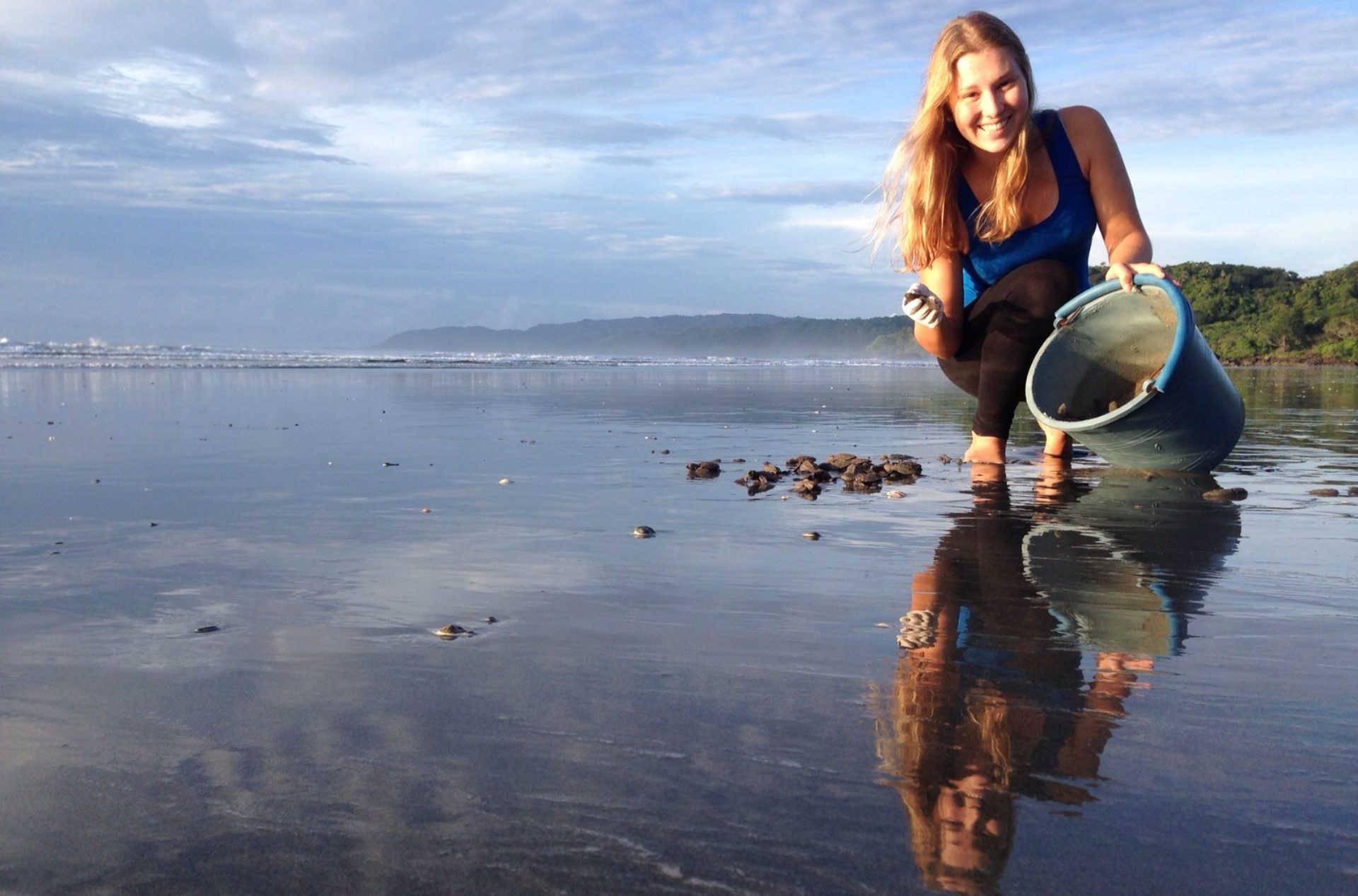
Montezuma is known by many as a very calm and relaxed, yet vibrant and vivid surfer’s town on the western coast of Costa Rica, situated on the peninsula de Nicoya, in the Puntarenas Province.
It is relatively unknown, however, that from Montezuma, a 45-minute hike along the beach and through the jungle, brings adventurers to our enthralling “Romelia Sea Turtle and Conservation Project.” In this particular project, volunteers care for and protect sea turtles, carry out beach cleanings, participate in our brand new mammal observation and research project, learn about the broad variety of wild animals and help in the onsite vineyard and greenhouse.
In order to gain a lucid idea about what’s happening out there, and how our appreciated volunteers are enjoying this place, it is essential to visit the project now and then. With this in mind, we planned a field trip a few months back to go and see the project for a couple of days.
Last Saturday we packed our backpacks with flashlights, pocket knives, and some victuals. We put on some firm hiking shoes and went off to this tranquil place, in which both our project coordinators and volunteers — along with many animals including turtles, monkeys, and iguanas — feel at home.
After a long trip from Hojancha to Montezuma, and an astonishing but dark hike along the coast, we arrived at the Romelia project around 8:30 in the evening. The Romelia staff had made us some delicious dinner which we ate before we went to bed around 09:30 pm.
The next day we had to be fresh and fruity for the beach patrol walk at 05:15 in the morning. Unfortunately, February is not the season for turtles to lay eggs in the Romelia region and thus we were left with merely a stunning sunrise at the beach. We returned to the lodge in the jungle, in which our volunteers read and do research about the various species living in Romelia. To our delight, breakfast was already made.
After breakfast, Jennifer and Antonia showed us their pool. Jenn is our research assistant and Antonia is one of our current volunteers. Although, “pool” is genuinely underrated; it was more like a crystal blue natural pool with a small waterfall surrounded by a distinct range of tropical trees and plants. Not to mention the howling monkeys, the thumping butterflies and other local residents.
Subsequently, the volunteers together with the local family guided us through the jungle via a mammal trail. At the end of the path, the volunteers had attached a camera to a tree which starts snapping photos when there is little motion in front of the camera. Such a camera is perfect to track which species of the colourful jungle call home. When we arrived at the “camera tree” we saw proof of the fact that their research program was fruitful, since the counter on the camera increased from 27 to 81 photos.
We got so excited that we went almost running back to the main lodge where we plugged the camera into one of our laptops.
What we then saw was just marvellous. The camera had made several photos during the night of a deer and a tempesquinte, which is a beautiful coyote-like animal. Thereafter, we sure enough had to roll up our sleeves and assemble wood from the beach and bring it to the kitchen, as it is used to cook with. After a hearty and “rico” (commonly used for “delicious” in Costa Rica) dinner, we learned some more about the research project and did another beach patrol. Again, we did not succeed in finding turtles or turtle eggs but the bright, starry sky was certainly more than worth the walk.
After a good sleep, the next morning we helped clean the beach and headed back to Hojancha. Altogether, being at the Refugio Mixto Nacional de Vida Silvestra Romelia was a life-changing experience and a place which I can’t wait to visit again. In case you have the same feeling after reading this blog, check out our Montezuma Sea Turtle Program!
By Bram Voets, Marketing Intern




